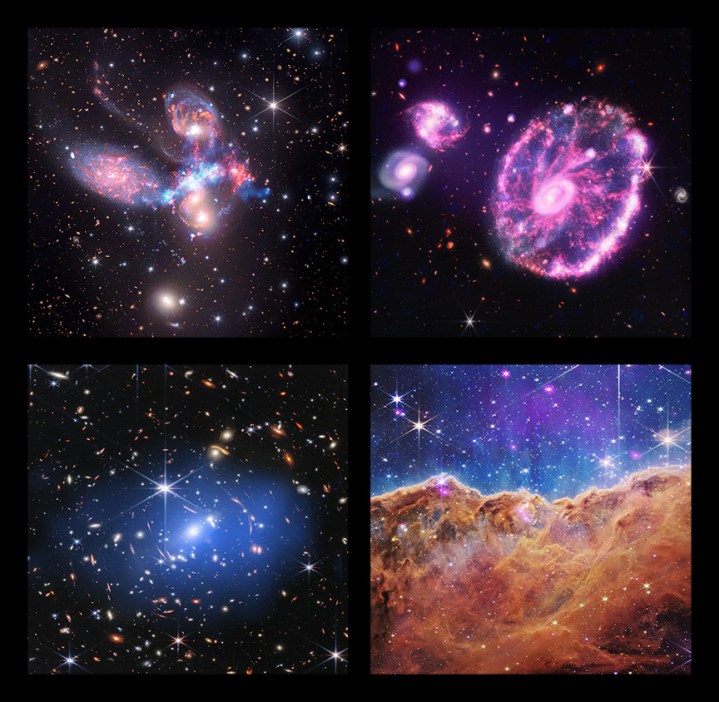This week has been a fun time for telescope team-ups, with a recent project combining data from the James Webb and Hubble Space Telescopes. There’s also a second set of images that has been released that combines data from the James Webb Space Telescope and the Chandra X-ray Observatory.
The Chandra observatory, which is also a space-based telescope, looks in the X-ray wavelength to investigate phenomena like epic kilonova explosions, search for the universe’s missing matter, and capture stunning images of the universe as seen in X-ray observations. It has even been used to detect a possible exoplanet in the Whirlpool galaxy. Now, it has turned its sights on the targets of James Webb’s first images to show these now-famous objects in a new light.

Clockwise from top left, these images show Stephan’s Quintet, the Cartwheel Galaxy, the Carine Nebula, and the first Webb deep field. The Chandra X-ray data has been added to the original images in shades of blue and purple, picking out the X-rays being given off by things like extremely hot gas, bright young stars, or by black holes or neutron stars which are feeding on nearby sources of matter.
Compared to Webb’s infrared view, Chandra observes even higher energy X-rays, which are given off by very high energy processes. By looking at both of these wavelengths, astronomers can pick out phenomena which would otherwise be invisible. In Stephan’s Quintet, for example, a group of five close galaxies, the Chandra data revealed a shockwave caused by two of the galaxies colliding into each other at 2 million miles per hour. This shockwave is heating up gas to tens of millions of degrees. In the Carina Nebula image, the X-rays shown in purple pick out some of the hottest and most massive young stars.
These images show that, as powerful as Webb is alone, it is becomes even more so when used along with other tools. “[Webb] is designed to work in concert with NASA’s many other telescopes as well as facilities both in space and on the ground,” NASA said. “These new versions of Webb’s first images combine its infrared data with X-rays collected by NASA’s Chandra X-ray Observatory, underscoring how the power of any of these telescopes is only enhanced when joined with others.”
Editors' Recommendations
- James Webb captures the edge of the beautiful Horsehead Nebula
- See 19 gorgeous face-on spiral galaxies in new James Webb data
- Four telescopes work together to create a gorgeous image of a supernova remnant
- James Webb provides a second view of an exploded star
- James Webb telescope captures a dramatic image of newborn star



